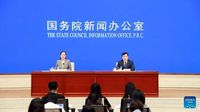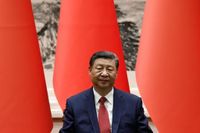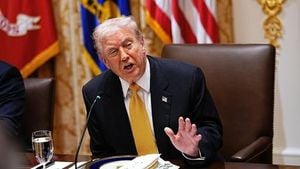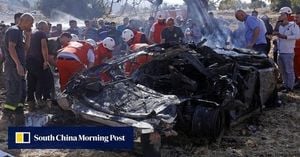China’s economic engine, long celebrated for its relentless momentum, is showing clear signs of fatigue. New data released on August 16, 2025, by the National Bureau of Statistics revealed that factory and mine production in July rose by just 5.7% year-on-year—the slowest pace since November and a notable drop from June’s 6.8%. While such growth rates might still look enviable to Western economies, for China, they signal a pronounced deceleration.
Retail sales, a critical gauge of consumer confidence and domestic demand, painted an even bleaker picture. July’s retail sales grew a mere 3.7% year-on-year, the weakest performance of 2025 and a sharp decline from June’s already modest 4.8% increase. According to Bloomberg, this slowdown has rattled policymakers and investors alike, raising questions about the sustainability of China’s current economic model.
Behind these headline numbers lies a complex web of challenges. Fixed-asset investment—a key driver of growth encompassing spending on infrastructure, property, and equipment—expanded just 1.6% in the first seven months of the year. This slowdown is especially concerning because it coincides with a deepening contraction in the real estate sector, which has traditionally been a powerhouse for Chinese economic growth.
“July’s main economic indicators suggest that the country’s tariff-related swoon has begun,” Homin Lee, a senior macro strategist at Lombard Odier in Singapore, told Bloomberg. “The loss of momentum evident in both demand and supply indicators calls for the mid-year fiscal policy tweak.”
Unemployment is also creeping upward, with the urban jobless rate rising to 5.2% in July—a figure that exceeded expectations and adds to the growing sense of unease. Meanwhile, growth in yuan-denominated new loans contracted for the first time in two decades, signaling subdued willingness among businesses and consumers to borrow and spend.
Adding to the economic headwinds, July brought a barrage of extreme weather. Heavy rain, flooding, and record-high temperatures disrupted industrial activity and construction across vast regions of the country. The timing couldn’t have been worse, as these disruptions overlapped with what is already a seasonally slow period for the Chinese economy.
Investment in manufacturing, property, and infrastructure fell across the board in July—an “extremely rare” occurrence, according to Jacqueline Rong, chief China economist at BNP Paribas SA. She explained to Bloomberg that local governments have been strictly controlling new investment in sectors suffering from overcapacity, in a bid to curb what Beijing calls “involution”—a phenomenon where excessive competition leads to diminishing returns and wasted resources.
But this clampdown on investment has had unintended consequences. Private capital expenditure declined 1.5% in the first seven months of the year, the worst reading since September 2020. As Rong noted, “If August’s economic data continue to be weaker than expectations, policymakers may feel compelled to introduce additional supportive measures in late September or early October to prop up growth in the fourth quarter.” Still, any new stimulus package is expected to be smaller than last year’s, given that the risk of missing the government’s roughly 5% annual growth target is lower and the stock market is in better shape.
China’s economic malaise is not just a story of slowing numbers; it’s a tale of shifting strategies and deep-seated structural issues. As The Economist reported, domestic consumption remains stubbornly inadequate for a country at China’s stage of development. Consumption accounts for only about half of total output—far below the 90% typical in developed economies—and the gap has widened since the collapse of the housing market. For many Chinese households, property investment is the primary means of saving, so falling home values have forced families to tighten their belts and save more, further dampening demand.
With domestic consumption flagging, Chinese firms have ramped up exports to compensate. This has flooded global markets with inexpensive goods, attracting criticism from trading partners and raising the specter of retaliatory measures. Yet, as The Economist points out, this export-driven growth strategy is reaching its limits. “If it hasn’t already done so, this export-oriented growth strategy is now finally approaching its limits,” the publication noted.
Beijing’s solution, at least on paper, is straightforward: reduce investment and boost consumption. The government has made some progress in major cities, where housing markets have stabilized, and investment is being channeled into high-quality, strategic industries. However, smaller cities have yet to embrace this new approach. In their quest to meet national growth targets, many continue to pour money into new projects, resulting in excess capacity, unprofitable firms, and falling prices—a vicious cycle that only deepens the economic malaise.
One particularly stark statistic underscores the scale of the problem: analysts estimate that up to 80% of China’s property developers may need to go bankrupt before the real estate market can truly stabilize. A similar reckoning may await other sectors, such as car manufacturing, where overcapacity is rife.
For those firms that survive this shakeout, the next challenge will be to raise wages and benefits, thereby giving households more spending power and kickstarting consumption. But this would come at the expense of corporate margins and could face resistance from powerful vested interests that underpin the ruling party’s authority. As The Economist observed, “China’s economic travails show that even autocracies struggle to make painful adjustments.”
In response to the slowdown, Beijing has rolled out a series of targeted measures. Around late July, the government expanded consumer subsidies and trade-in programs to stimulate demand, particularly for big-ticket items like cars and appliances. Some local governments, facing funding shortages for these programs, received additional support from the central government. There are even discussions about broadening these initiatives to cover more goods and services, according to Standard Chartered analyst Ding Shuang.
Still, the effectiveness of these measures is in question. Retail sales of household electronics, office supplies, and furniture all slowed in July, while car purchases fell 1.5% year-on-year—the first such drop since early 2025. Xiaojia Zhi, chief China economist at Credit Agricole CIB in Hong Kong, told Bloomberg, “Looking ahead, economic activity data will likely show more signs of growth slowdown, perhaps even at a faster pace in the coming months.”
Interestingly, the slowdown in China comes as the United States faces its own economic challenges. The Economist points out a curious convergence between the two superpowers: both economies are showing signs of deceleration, and both governments are intervening more directly to guide economic outcomes. The result? Weakening demand for the rest of the world’s output—a worrying prospect for a global economy still struggling to recover from the pandemic recession.
For now, China’s leadership is sticking with its planned supportive measures, promising to ramp up aid if the data continues to disappoint. Investors and policymakers alike are watching closely, knowing that the next few months could be decisive in determining whether the world’s second-largest economy can regain its footing—or whether the slowdown will deepen, with ripple effects far beyond China’s borders.






